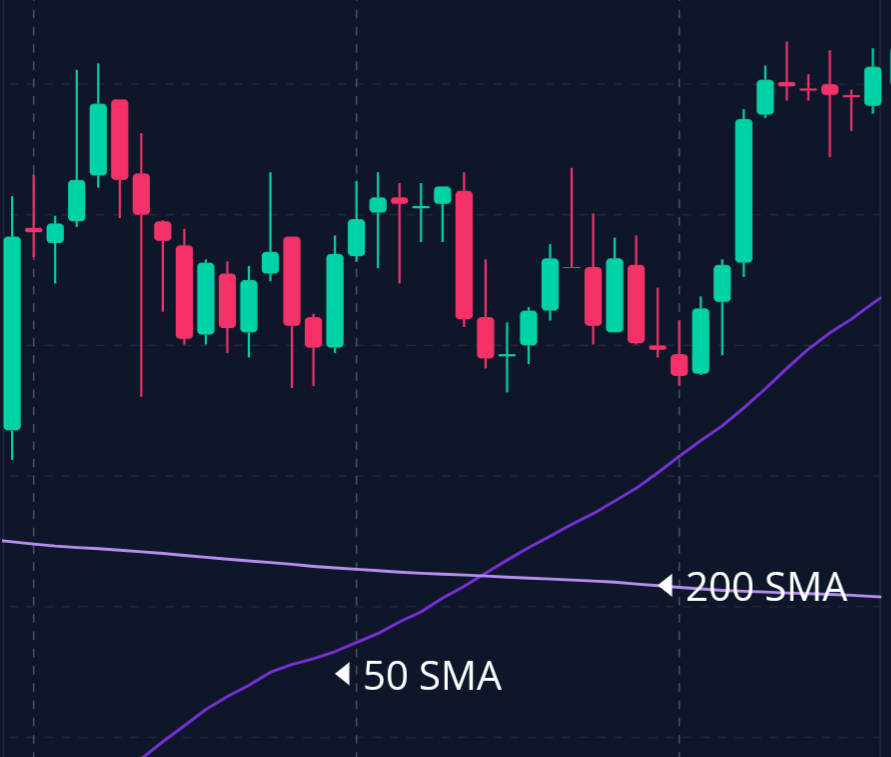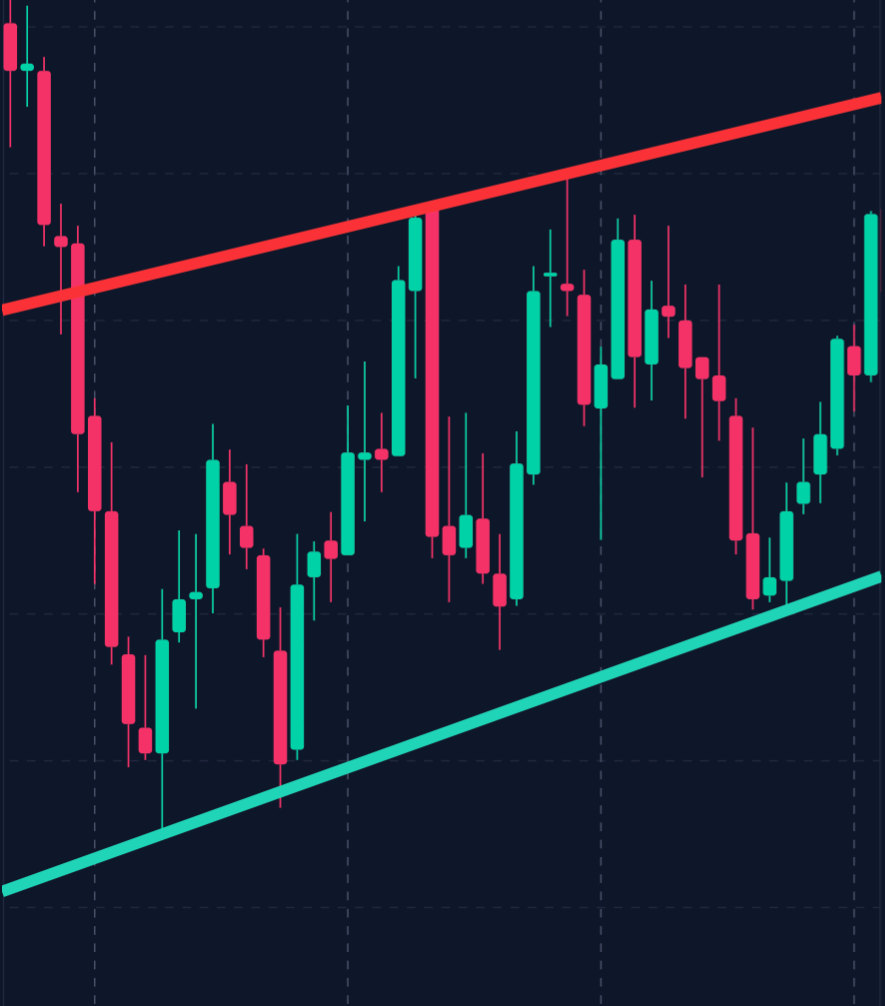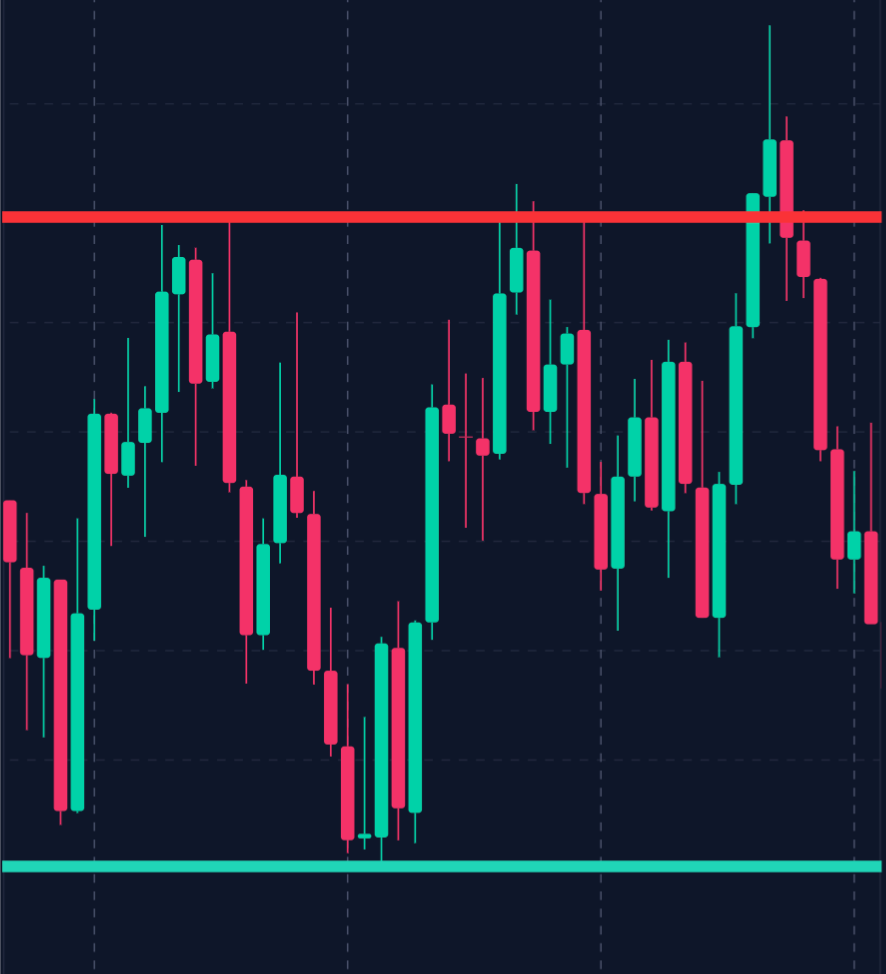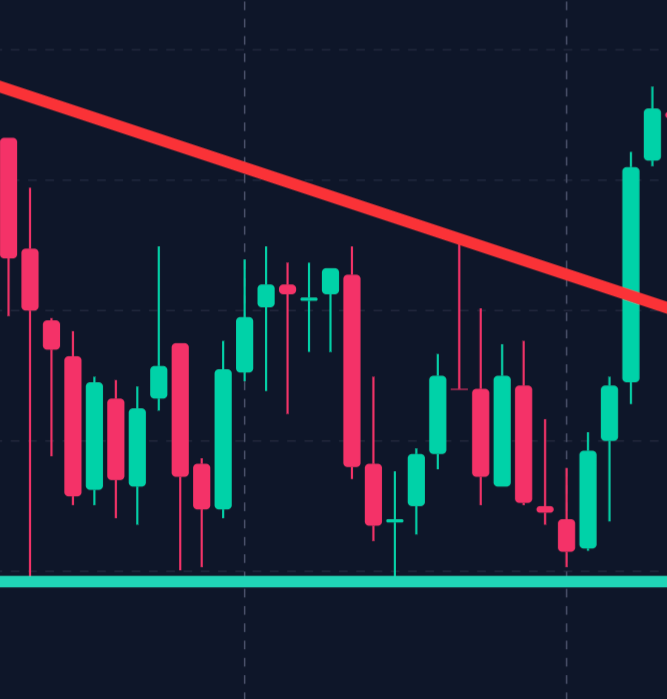Forex Trading For Beginners: Everything You NEED To Know

Click Here To Save Time
Time Saver
– Forex trading involves buying and selling currencies to profit from changes in exchange rates.
– Understanding key concepts like currency pairs, pips, leverage, and margin is crucial for success in Forex trading.
– Developing a solid trading plan with clear goals and risk management strategies is essential to avoid significant losses.
– Trend following, range trading, and breakout strategies are common methods used by traders to make profitable trades.
– Major economic events, such as Brexit, can have a significant impact on currency prices and offer trading opportunities.
– Advanced techniques like carry trades and hedging can help experienced traders maximize their profits and manage risks effectively.
How to Trade Forex
Forex trading, also known as foreign exchange trading, is the act of buying and selling currencies with the goal of making a profit.
The Forex market is the largest and most liquid financial market in the world, with trillions of dollars traded every day.
Unlike stock markets that operate within specific hours, the Forex market is open 24 hours a day, five days a week, with trading happening across major financial centers such as London, New York, Tokyo, and Sydney.
What is Forex Trading?
Forex trading involves exchanging one currency for another.
For example, you might trade U.S. dollars (USD) for euros (EUR).
The value of these currencies is constantly changing due to factors like economic conditions, interest rates, and political events.
Day traders and investors make a profit by buying a currency when they think its value will go up and selling it when they think its value will go down.
Key Terminologies in Forex Trading
– Currency Pair:
In Forex trading, currencies are traded in pairs, such as EUR/USD.
The first currency in the pair is the base currency, and the second is the quote currency.
The price of the pair tells you how much of the quote currency is needed to buy one unit of the base currency.
– Pip:
A pip is the smallest price move that a currency can make.
For most currency pairs, one pip is equal to 0.0001.
– Spread:
The spread is the difference between the bid price (the price at which you can sell a currency) and the ask price (the price at which you can buy a currency).
Brokers make money by charging a spread on trades.
– Leverage:
Leverage allows you to control a large position with a small amount of capital.
For example, if you have a leverage of 100:1, you can control $100,000 worth of currency with just $1,000.
While leverage can increase your profits, it also increases your risk.
– Margin:
Margin is the amount of money required to open a leveraged position.
It acts as a security deposit to cover potential losses.
Getting Started with Forex Trading

Understanding the Forex Market
Before you start trading, it’s important to understand how the Forex market works.
The market is driven by supply and demand, which are influenced by various factors, including economic indicators, interest rates, and political events.
For example, if a country’s economy is doing well, its currency is likely to appreciate.
Conversely, if a country is experiencing political instability, its currency may depreciate.
Choosing a Reliable Forex Broker
To trade Forex, you’ll need to open an account with a Forex broker.
Brokers provide the trading platform and tools you need to access the market.
Here are some things to consider when choosing a broker:
– Regulation:
Make sure the broker is regulated by a reputable financial authority.
This ensures that the broker operates within strict guidelines and that your money is safe.
– Trading Platform:
Look for a user-friendly platform that offers essential features like charting tools, real-time data, and order execution capabilities.
Popular platforms include MetaTrader 4 (MT4) and MetaTrader 5 (MT5).
– Fees and Spreads:
Brokers charge fees in the form of spreads and commissions.
Compare the costs between different brokers to find one that offers competitive rates.
– Customer Support:
Reliable customer support is important, especially if you’re new to Forex trading.
Choose a broker that offers 24/7 support via phone, email, or live chat.
Developing a Forex Strategy

Developing a trading strategy is a roadmap for your Forex trading journey.
It outlines your goals, risk tolerance, and strategies.
A good trading plan should include the following:
– Trading Goals:
Define what you want to achieve through Forex trading.
Are you looking to make short-term profits, or are you aiming for long-term growth?
Having clear goals will help you stay focused and disciplined.
– Risk Management:
Set rules for how much you’re willing to lose on each and every trade.
A common rule of thumb is to risk no more than 1-2% of your trading capital on a single trade.
This way, even if a trade goes against you, you won’t lose a significant portion of your account.
– Trading Strategies: Develop specific strategies for entering and exiting trades.
Your strategies should be based on both technical analysis (studying price charts and patterns) and fundamental analysis (analyzing economic indicators and news events).
Basic Forex Trading Strategies
Successful Forex trading requires a combination of strategy, discipline, and risk management.
Here are some basic strategies that traders use to profit from the Forex market:
Trend Following Strategy

Trend following is one of the simplest and most effective Forex trading strategies.
It involves identifying the direction of the market trend and trading in the same direction.
Trends can be upward (bullish), downward (bearish), or sideways (neutral).
Example:
Suppose the EUR/USD pair is in an upward trend.
A trend-following trader would look for opportunities to buy the pair when it dips to a support level and then sell it when it reaches a new high.
This strategy works best in markets that have a clear and strong trend.
Key Tools:
– Moving Averages:

Moving averages, such as the Simple Moving Average (SMA) and the Exponential Moving Average (EMA), are popular tools for identifying trends.
A rising moving average indicates an upward trend, while a falling moving average indicates a downward trend.
– Trendlines:

Drawing trendlines on a chart can help you visualize the trend and identify potential breakout points.
A trendline connects the lows of an uptrend or the highs of a downtrend.
Range Trading Strategy

Range trading involves identifying key support and resistance levels and buying at support and selling at resistance.
This strategy is most effective in markets that are not trending, where the price tends to bounce between established levels.
Example:
Imagine the GBP/USD pair is trading between 1.3800 (support) and 1.4000 (resistance).
A range day trader would buy near the support level and sell near the resistance level, profiting from the predictable price movements within the range.
This strategy requires patience and careful monitoring of the market.
Key Tools:
– Support and Resistance:
Support and resistance levels are horizontal lines on a chart that represent areas where the price has historically reversed. Support is a level where the price tends to stop falling and start rising, while resistance is a level where the price tends to stop rising and start falling.
– Oscillators:
Oscillators like the Relative Strength Index (RSI) and Stochastic Oscillator are used to determine whether a currency pair is overbought (likely to fall) or oversold (likely to rise).
These indicators can help you time your entry and exit points in a range-bound market.
Breakout Trading Strategy

Breakout trading involves entering the market when the price breaks out of a defined range, often leading to a significant move in the direction of the breakout.
This strategy is effective in markets that are about to transition from a period of low volatility to high volatility.
Example:
Suppose the USD/JPY pair has been trading in a tight range between 110.00 and 111.00 for several days.
A breakout trader might place a buy order above 111.00 and a sell order below 110.00, aiming to capitalize on the next strong move.
The key to successful breakout trading is identifying the right range and timing the entry correctly.
Key Tools:
– Volume: A surge in trading volume can confirm the strength of a breakout.
Higher volume indicates that more traders are participating in the move, which increases the likelihood that the breakout will continue.
Candlestick Patterns

Candlestick patterns like triangles, flags, and head-and-shoulders can signal potential breakouts.
These patterns often precede significant price moves and can provide valuable clues about the direction of the breakout.
Case Study:
The Impact of Economic Events on Forex Trading
Understanding how economic events impact the Forex market is crucial for making informed trading decisions.
Let’s take a look at a real-world example to see how major events can affect currency prices.
Case Study:
Brexit and the GBP/USD Pair
In June 2016, the United Kingdom held a vote on whether to remain in or leave the European Union, an event known as Brexit.
The vote had a significant impact on the Forex market, particularly on the GBP/USD currency pair.
Background:
In the months leading up to the referendum, the British pound (GBP) was highly volatile as traders speculated on the outcome.
Polls showed a close race between the “Leave” and “Remain” campaigns, creating uncertainty in the market.
Event:
On the night of the referendum, as results started coming in, it became clear that the “Leave” vote was gaining momentum.
The GBP/USD pair, which had been trading around 1.5000, started to plummet as traders reacted to the news.
Outcome:
By the time the final result was announced, the GBP/USD had dropped to around 1.3200, marking a dramatic decline of nearly 10% in just a few hours.
This sharp drop was driven by the uncertainty and fear that the Brexit vote brought to the markets.
Day traders or investors who had anticipated a “Leave” vote and positioned themselves accordingly were able to profit significantly from the sudden price movement.
On the other hand, those who were caught on the wrong side of the trade faced substantial losses.
Analysis:
The Brexit case study highlights the importance of being aware of major economic and political events and understanding how they can influence the Forex market.
Successful day traders and investors often stay informed about global developments and use this information to anticipate market movements.
In this case, those who paid close attention to the news and conducted thorough analysis were better positioned to react to the market’s reaction to Brexit.
Advanced Forex Trading Techniques
As you gain more experience in Forex trading, you may want to explore advanced techniques that can help you maximize your profits and manage risks more effectively. Before exploring advanced forex techniques, make sure you have advanced technical analysis skills down first.
Carry Trade Strategy
The carry trade is an advanced strategy that involves borrowing money in a currency with a low-interest rate and using it to buy a currency with a higher interest rate.
The goal is to profit from the difference in interest rates, known as the “carry.”
This strategy works best in stable markets with little volatility, as large price swings can wipe out the gains from the interest rate differential.
Example:
A popular carry trade in the early 2000s involved borrowing Japanese yen (JPY), which had a near-zero interest rate, and investing in higher-yielding currencies like the Australian dollar (AUD) or New Zealand dollar (NZD).
The interest rate differential between these currencies provided a steady stream of income for traders who held these positions over time.
Key Considerations:
– Interest Rate Differentials:
When using the carry trade strategy, focus on currency pairs with significant interest rate differences.
This will maximize the potential income from the carry.
– Market Stability:
Carry trades are most effective in stable markets.
High volatility can lead to sharp price movements that may offset the interest rate gains, leading to potential losses.
Hedging Strategy
Hedging is a strategy used to protect your investments from adverse market movements.
It involves opening multiple positions to offset potential losses.
Hedging is particularly useful in volatile markets, where prices can change rapidly and unpredictably.
Example:
Suppose you have a long position on the EUR/USD pair, but you’re concerned about potential Euro weakness due to an upcoming European Central Bank (ECB) meeting.
To hedge against this risk, you could take a short position on a different Euro-related pair, such as EUR/JPY.
This way, if the Euro weakens, the losses on your EUR/USD position could be offset by gains on your EUR/JPY position.
Key Tools:
– Correlation Analysis:
Understanding the correlation between currency pairs is crucial for effective hedging.
Pairs that are positively correlated move in the same direction, while pairs that are negatively correlated move in opposite directions.
– Options:
Forex options can also be used as a hedging tool.
By purchasing a put option, you can protect yourself against potential losses if the currency pair moves against you.
Conclusion
Forex trading offers significant opportunities for profit, but it also comes with considerable risks.
To be successful in the Forex market, it’s essential to have a solid understanding of how the market works, develop effective trading strategies, and implement robust risk management techniques.
Whether you’re a beginner or an experienced trader, continuously learning and adapting to market conditions is key to long-term success in Forex trading.
By mastering the basics, staying informed about global events, and refining your strategies, you can increase your chances of becoming a successful Forex trader.
Remember that Forex trading is not a get-rich-quick scheme; it requires patience, discipline, and a commitment to ongoing education.
Click Here For Our Sources
Sources
Investopedia: https://www.investopedia.com/articles/forex/06/beginnerforex.asp
BabyPips: https://www.babypips.com/learn/forex/news-trading
– DailyFX: https://www.dailyfx.com/education/risk-management
The Balance: https://www.thebalance.com/what-is-a-carry-trade-1978954
IG: https://www.ig.com/uk/trading-strategies/psychology-of-trading-how-to-stay-in-control-190722
Leave a Reply
You must be logged in to post a comment.